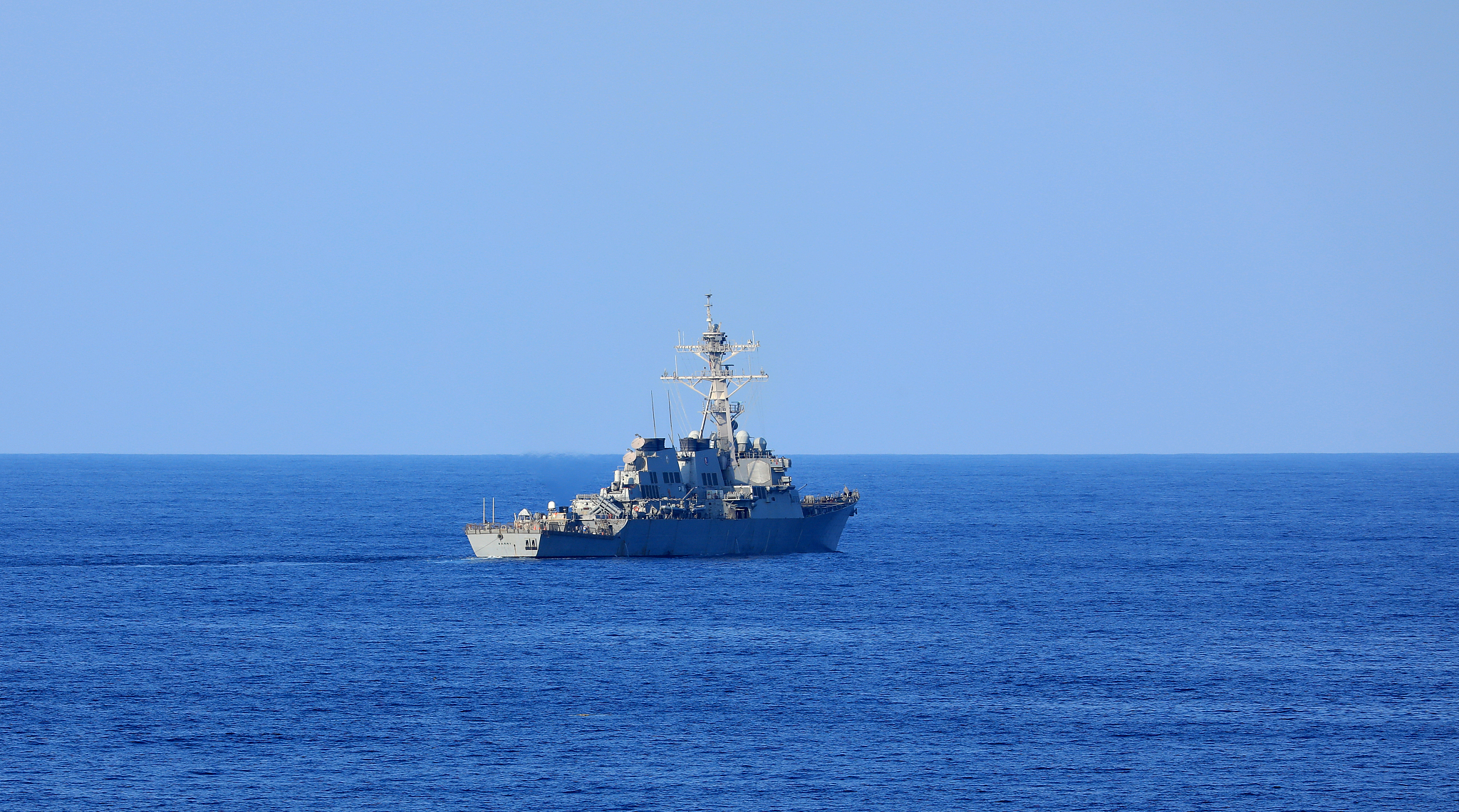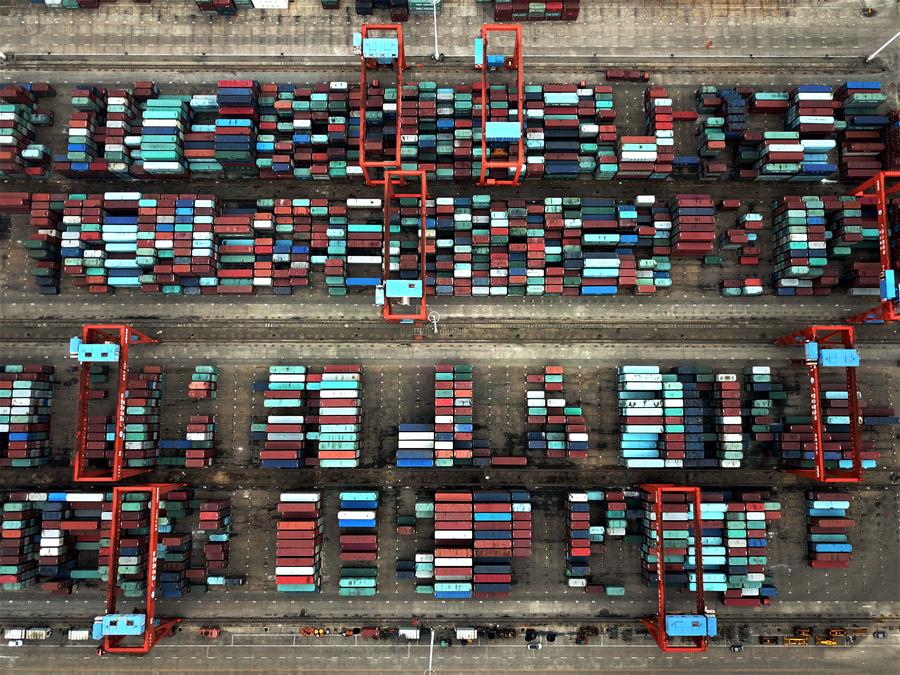Editor's note: Azhar Azam works in a private organization as market and business analyst and writes about geopolitical issues and regional conflicts. The article reflects the author's opinions and not necessarily the views of CGTN.
The proximity of Asia Pacific to two oceans and several continents as well as the region's three-fifth and two-third contribution in global GDP and international growth makes it a territory of vital strategic and economic importance for the U.S. and other world powers, prodding them to limit China's increasing centrality in regional development.
Beijing is witnessing the fastest expansion of the middle class the world has ever seen. According to Pew's income band classification, between 2000 and 2018, Chinese middle-class number has mushroomed from just 3 percent to more than half of the total population or about 707 million. The likelihood of 1.2 billion Chinese middle class by 2027 offers Asia Pacific a tremendous opportunity to take advantage of China's economic growth.
With Pacific following wider-regional trends and facing a downward pressure on imports and exports, East and North Asia was expected to perform the best than other regions, thanks to China's quick trade and economic recovery. In 2021, Asia Pacific's economic growth forecast of 6.2 percent is again likely to be on the heels of Beijing's 8.3 percent growth.
In view of Asia Pacific's great economic potential, underpinned by China's efforts to boost regional trade and resolve maritime disputes peacefully – the U.S. has been feeling threatened to lose its historical dominant position in the region.
Throughout 2020, the U.S. provoked China in the name of deterrence and successively deployed three carrier strike groups, nuclear attack submarines and bombers to the South China Sea (SCS) as part of its "Dynamic Force Employment." It was despite the fact that Defense Secretary Jim Mattis' concept to deter adversaries by being "strategically predictable, but operationally unpredictable" would bewilder the U.S. allies in the bordering regions of China and Russia about so-called valued practices of transparency and predictability.
Under U.S. President Joe Biden, there is no change in America's aggressive nature. Since he took over from Donald Trump in January, the U.S. warships have so far sailed through the Taiwan Straits six times to stir up tensions in the territory and the wider region. On May 20, a U.S. destroyer even intruded Chinese waterways in the SCS before being driven out by the People's Liberation Army.

America's Arleigh Burke-class guided-missile destroyer USS Barry (DDG 52) at South China Sea. /VCG
America's Arleigh Burke-class guided-missile destroyer USS Barry (DDG 52) at South China Sea. /VCG
Countries in the Asia Pacific are fretful about the belligerent posture of the U.S. Indo-Pacific strategy. They thus want American hawks to try not to contain the world's second-largest economy and seek them to confine Washington's rivalry with Beijing to competition alone. Unfortunately, the U.S. has different plans altogether.
Snubbing the re-conciliatory spirit of the country's allies, the U.S. Department of Defense in May requested $5.1 billion for Pacific Deterrence Initiative. The militaristic program and Defense Secretary Lloyd Austin's issuance of directive and acceptance of recommendations of the China Task Force (both classified) – Biden announced in February – aim to laser-focus, bolster deterrence and answer unfounded threats from "the number one pacing challenge," China in the Indo-Pacific region.
Asia Pacific is still in shock over protectionist Trump's withdrawal from the "horrible" Trans-Pacific Partnership. With no Biden's firm plan to join the Comprehensive and Progressive Agreement for Trans-Pacific Partnership, Washington's brimful economic beef and political malaise toward Beijing will further reinforce region's doubts about U.S. credibility and raucous approach to artificially control a rising China.

Containers deposited at the Qinzhou Free Trade Port Area in Guangxi Zhuang Autonomous Region, south China, November 9, 2017. /Xinhua
Containers deposited at the Qinzhou Free Trade Port Area in Guangxi Zhuang Autonomous Region, south China, November 9, 2017. /Xinhua
In a tense regional backdrop, countries in Asia Pacific would consider China a more reliable partner. Beijing is keen to strengthen economic cooperation and hone the development of the fastest-growing region in the world through Belt and Road Initiative (BRI) and world's largest trade agreement, the Regional Comprehensive Economic Partnership (RCEP).
Since the launch of BRI in 2013, scope of Chinese signature tune hasn't stopped from expansion as almost 140 countries and regions have signed up to grand China's vision, trade between Beijing and partner nations exceeds $9.2 trillion and China's direct investments along the mega global project stand at in excess of $130 billion.
The latest data expounds BRI's essential role in boosting the pandemic-hit international trade and re-lifting the regional and global growth. Project's success coupled with the RCEP – which for the first time fastened China, Japan and the Republic of Korea in a trade deal and set to enter in a practical phase later this year – would set a new benchmark for a multilateral cooperation through regional connectivity and further integrate Asia Pacific economies.
China's emergence as a global economic power isn't a source of concern for any country in the region. It's U.S. incitement to hatred that poses threat to regional stability and prosperity, urging all Asia Pacific nations to protect their high economic stakes and the valued peace from America's undermining activities against shared future and growth.
Washington has been at pains to portray Beijing as a challenge to the regional and global economy and security. As more than 100 countries trade twice with China than they do with the U.S., the false representation of China's economic cooperation for sustainable peace to conjure up America's lost soul has been repelled by Asia Pacific and the entire world in chorus.
The growth of all nations in the Asia Pacific and peace across the region are deeply intertwined. This realization about the U.S.-hyped strategic rivalry with China and region's elusion to morph itself into a purveyor of Washington's smear campaign against Beijing should be buttressed to turn the region into a more vibrant economic power and make it a beacon of high-quality development for the rest of the world.
(If you want to contribute and have specific expertise, please contact us at opinions@cgtn.com.)

